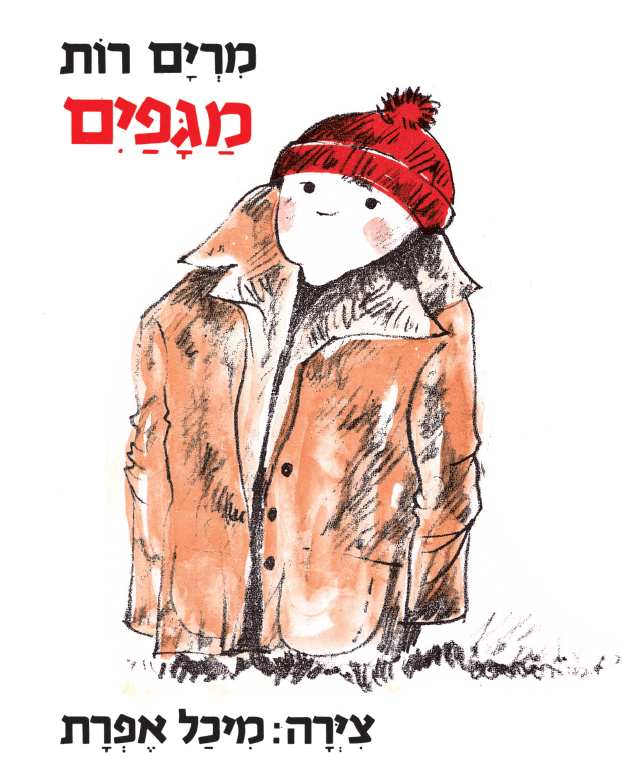מגפיים
כתבה: מרים רות | איור: מיכל אפרת
Boots by Miriam Roth Illustrations by Michal Efrat
“Rain, rain, more and more! Rain, rain that I adore!” In this beloved story by prize-winning author Miriam Roth, a child named Tzafrir eagerly anticipates the arrival of the rain, and with it… a pair of red boots!
"Grant dew and rain for a blessing upon the whole earth" (from the Amidah prayer)
Anticipating and praying for rain has been a part of life for the inhabitants of Eretz Israel throughout history, embodied in the many songs, legends, and stories written in and about the Land of Israel throughout the generations. Back when most of the land’s inhabitants were farmers, they would pray for rain to water the soil and produce an abundant harvest. Even today, despite technological advances, anticipating the rainy season is still an integral part of life in Israel. We scan the skies, keep track of the water level in the Sea of Galilee and the “red lines” indicating it’s full (or the opposite), and compare this season’s rainfall to the annual average. The childlike joy expressed in the wish to don boots, unfurl a new umbrella, and jump in puddles is linked to the hope that this year, too, we will be blessed with abundant rain.
Family Activities:
Do the members of your family enjoy it when it rains? After reading the story, you might have a conversation with your children and ask them whether they, like Tzafrir, love rain. Why? Who needs rain, and who enjoys it? Ask your children whether they know any other stories, songs, and tales about the rain. You can all snuggle together in a cozy corner of your home and tell stories about the rain.
Tzafrir asks: “Mommy! Will the rain ever come?” Like many children, Tzafrir is full of anticipation and has a hard time waiting for the rainy season to begin. Suggest to your children that they look for changes in the weather that indicate winter’s coming (for example: birds migrating south, days getting shorter, skies becoming cloudy). You could also have a conversation about things in life that we can control, versus things over which we have no control.
“Tzafrir was still a little boy last winter”: You might talk about things your children are able to do now that they couldn’t do last winter. You could also take out their shoes, clothes, and boots from last winter and see if they still fit, so your children can see how much they’ve grown and developed since then.
Your children can join in anticipating and tracking the rain (or snow, if you live in a cold climate). Work together on designing a tracking chart. Every evening during the winter months, they can make a mark (or draw a picture) to indicate whether rain (or snow) fell that day. When the season is over, you can all count together the number of days on which there was some precipitation.
You can also make a rain collector: take a plastic bottle and cut off the top (be careful not to cut yourselves on any sharp edges!). Place the empty bottle in an open area outdoors, or attach a loop of metal wire and hang it outside your window. How long does the bottle take to fill up? Your children can track the rise of the water level in the bottle, and then decide how they want to use the water they’ve collected.
You and your children can also go on a puddle expedition, just like Tzafrir and his family. Don’t forget to wear boots and bring an umbrella!
You can set aside special games and other entertainment, to be opened on rainy days! Ask your children to decorate an empty shoe box. You can then fill the box with small surprises, like stickers, paints, beads, or a bottle of soap bubbles, along with little handdrawn notes containing ideas for fun family activities for a rainy day (play word games; read books; cook and bake; etc.). Hide the box, and bring it out only when it rains!













